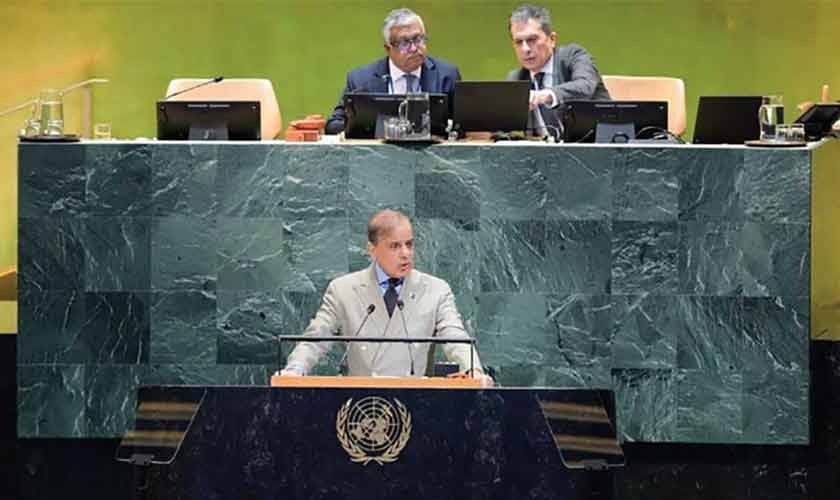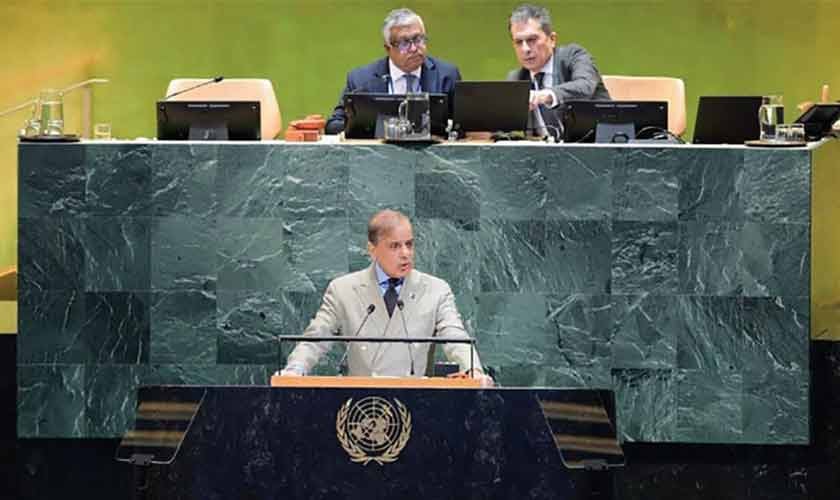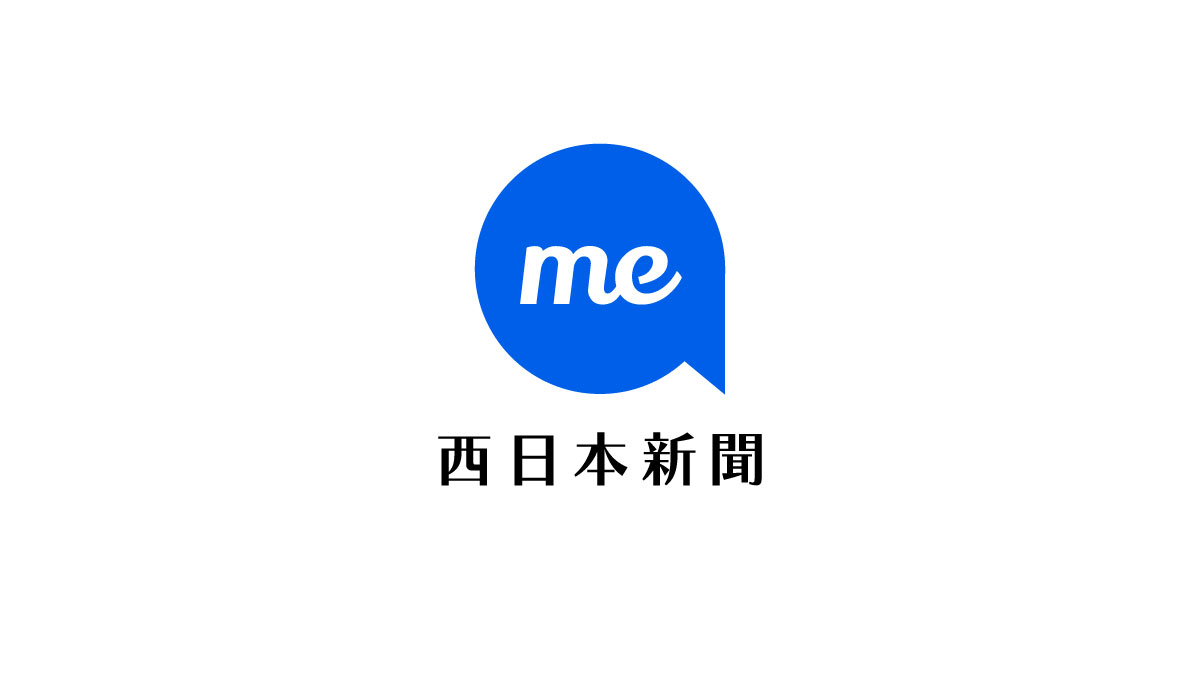The 80th United Nations General Assembly (UNGA) was not just a diplomatic summit; it was a global media spectacle. Each year, the big question for the Pakistani delegation is: what can be achieved from this global platform beyond photo-ops with dignitaries and the customary addresses at a forum that seems to have lost its ability to find meaningful solutions for many global crises?
This year, Pakistan’s delegation, led by Prime Minister Shahbaz Sharif, arrived amidst a more upbeat environment following the war with India and the lavish praise the country had received from former US President Donald Trump. The delegation conveyed a message of moral clarity, strategic ambiguity, and assertive symbolism.
### Shahbaz Sharif’s Speech: Emotionally Charged but Strategically Unclear
Prime Minister Shahbaz Sharif’s speech at the UNGA was emotionally charged and rhetorically bold. He condemned Israel’s actions in Gaza as genocide, reaffirmed support for Kashmir, and praised Donald Trump for brokering peace between Pakistan and India. The optics appeared designed to position Pakistan as a moral voice for the Muslim world.
However, the praise for Trump sounded out of place and raised questions about strategic coherence. Sharif’s speech seemed more tailored to domestic audiences rather than reflecting a clear foreign policy agenda. If Pakistan is eyeing a new position in the rapidly changing global diplomatic chessboard, it was not clearly communicated.
### Media Coverage and Public Perception
Sharif’s address and his subsequent meeting with former President Trump received moderate coverage in American media. Most reporting came from international and diaspora-focused outlets rather than mainstream US networks. Coverage mainly focused on the symbolism of the meeting and its context within broader diplomatic efforts to address the Gaza crisis.
Notably, leading US outlets such as CNN, The New York Times, and The Washington Post did not provide major commentary or analysis, suggesting that this event was not a top-tier diplomatic priority within American media narratives.
### Controversies and Protocol Violations
Some members of the Pakistani contingent raised slogans from the gallery during sessions, a violation of UN norms that earned them the ire of other delegates. This incident was widely viewed as being in bad taste. In response, UN security officials launched an investigation to understand how these individuals gained access and why slogans tied to Pakistan’s internal politics were voiced in a formal diplomatic setting.
The United Nations General Assembly maintains strict protocol, especially regarding the visitors’ gallery, which is accessible only through passes issued by member states’ diplomatic missions.
### The Dr. Shama Junejo Episode
The presence of Dr. Shama Junejo, a UK-based columnist and social media activist, as part of Pakistan’s delegation sparked controversy. Her seating directly behind Defence Minister Khawaja Asif during a United Nations Security Council session on artificial intelligence became a subject of social media commentary.
This raised a fundamental question: how did an individual not officially listed in the delegation’s letter of credence gain such proximity to Pakistan’s top diplomatic representatives? Denials from officials did little to quell speculation, especially as Junejo claimed that she had been formally included by Prime Minister Sharif and had contributed to drafting his UNGA speech.
This episode highlighted concerns about communication and coordination within Pakistan’s diplomatic institutions. In international forums like the UNGA, seating arrangements and delegation composition are tightly regulated, making this breach all the more significant.
### Defence Minister Khawaja Asif’s Interview
Defence Minister Khawaja Asif was the only senior official from the Pakistani delegation to give a direct interview to a Western media outlet. His discussion with Mehdi Hasan was widely circulated and became a flashpoint in Pakistani mainstream and social media.
The interview, broadcast on CNN and Al Jazeera, was tense and confrontational. Hasan posed pointed questions, and Asif struggled to defend the government’s hybrid governance model. He appeared to contradict himself on issues such as the validity of the upcoming 2024 elections and former Prime Minister Imran Khan’s social media activity.
Following the interview, intense debate unfolded on social media, especially around civil-military relations and the treatment of Imran Khan. CNN’s Becky Anderson fact-checked Asif’s claims, highlighting a lack of evidence in his assertions. The interaction underscored the entrenched challenges Pakistan faces in its democratic evolution.
### The Oval Office Meeting: A Visual Highlight
Despite the controversies, the day was salvaged by visuals from the meeting at the Oval Office where Pakistan’s civil-military leaders met with former President Trump, the Secretary of State, and other high-ranking US officials.
Although the White House did not issue any official readout of the meeting, Trump’s brief remarks before the meeting offered effusive praise for the Pakistani leaders.
### Domestic Media Response and Social Media Dynamics
While some critics on social media voiced skepticism, the majority of mainstream Pakistani media framed the UNGA presence as a diplomatic victory. Emphasis was placed on Sharif’s strong speech and meetings with Trump and leaders of other Islamic countries, creating a celebratory tone.
Pakistan’s UNGA 2025 campaign was bold but brittle. The delegation commanded attention but struggled to maintain coherence under scrutiny. The optics were emotionally resonant but strategically inconsistent.
Social media added another layer to the event, with viral moments, hashtags, and influencer narratives shaping perceptions far beyond the UN floor. Pakistani leaders and audiences at home are gradually coming to terms with the realities of new media, where narratives are shaped beyond traditional editorial controls exercised by mainstream outlets.
### Conclusion
In the age of global diplomacy, optics are not just about visibility—they are also about credibility, coherence, and control. Pakistan’s 80th UNGA participation showcased this delicate balance, highlighting both the potential and the pitfalls of diplomacy in today’s media-saturated world.
https://www.thenews.com.pk/tns/detail/1348316-pakistans-bold-yet-brittle-moment



